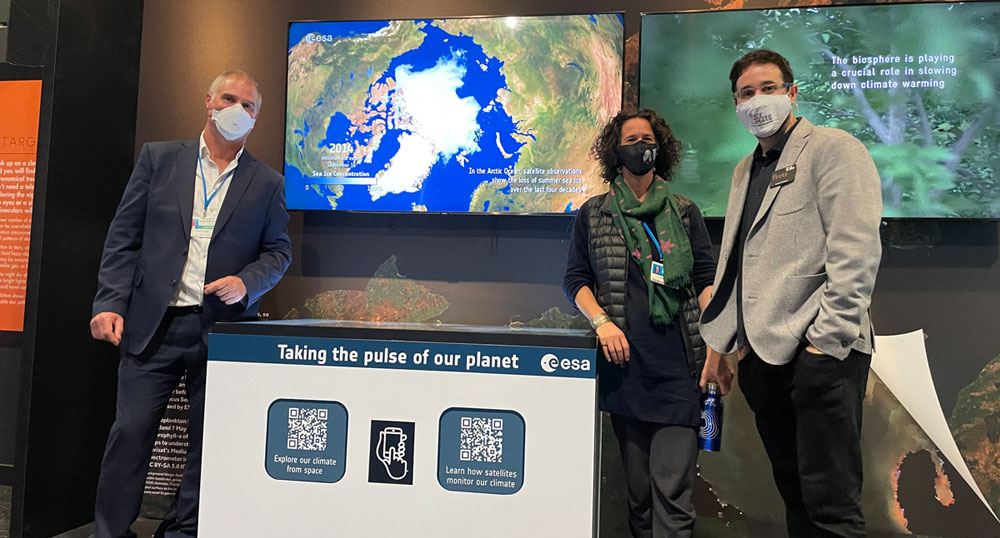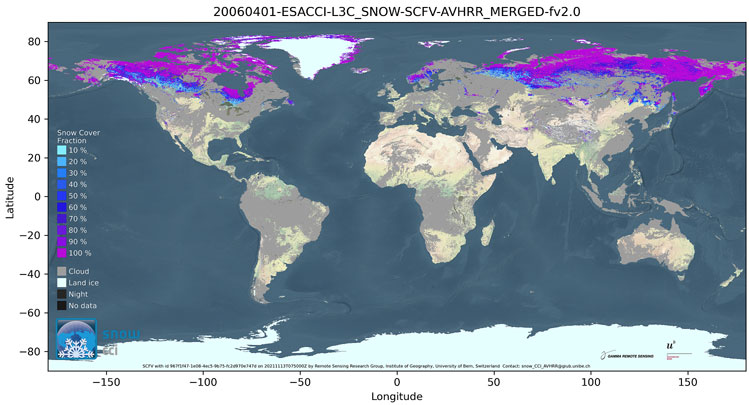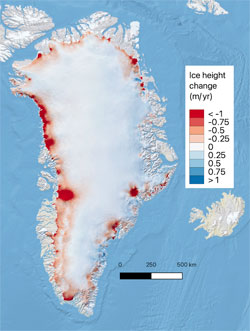- Learn & Discover
- COP26 fuels interest in satell...
COP26 fuels interest in satellite data
25 Nov 2021

As COP26 stimulates action to reduce global warming, the essential role of satellite data in understanding and monitoring climate change is apparent.
Long term environmental monitoring using satellite data and remote sensing emerges as key contributors to climatological research after two weeks of negotiations at the COP26 climate talks. The Agency showcased several new missions supporting climate action, with high resolution data on forest biomass and carbon dioxide emissions.
However, satellite data from operational and non-operational ESA missions provide long-term Earth observational records, giving essential context to current climate variability.
The region of High Mountain Asia extending from the Himalayas to the Hindu Kush, held centre stage at the Climate Change Conference since temperatures there are rising three times faster than global averages.
Recent research by the Remote Sensing Research Group (RSGB) and the Oeschger Centre for Climate Change Research at the University of Bern, used existing Advanced Very High Resolution Radiometer (AVHRR) data to explore this disproportionate regional effect of the climate emergency on seasonal snow cover.
These researchers are specialised in retrieving Essential Climate Variables (ECVs) from AVHRR data, leveraging the advantage of data acquired over Europe and globally for nearly 40 years, today archived and managed at ESA as part of its Heritage Space Missions portfolio.

"Crucial to making progress on climate change is to use a climate relevant timescale, which is the real advantage of Heritage Missions," said lead researcher, Dr Kathrin Naegeli. "The AVHRR dataset was of particular interest since in order to produce ECV timeseries that are characterised by high temporal and spatial variability, we needed daily resolution over a long-time scale."
The resulting ECV product, “Daily global snow cover product” is the longest-term snow cover product, covering the period 1982–2020 at a daily temporal and 0.05◦ spatial resolution, and was used by climate modellers from the University of Grenoble to make future predictions for the region.
AVHRR provides a medium spatial resolution, which may be coarser than other satellites but still provides higher resolved information than currently used in many climate models.
"It is essential to have the ECV snow cover accurately represented in all models in the past, to better predict what will happen in future carbon emission scenarios," added Dr Naegeli, who encourages satellite data based ECV product use among the community of climate modellers

Other recent research contributing to the pledges of COP26 are leveraging the long-term measurements from ESA’s operational ice mission, CryoSat, which celebrated 10 years in space in 2020.
ESA funded Polar+ Surface Mass Balance Feasibility project is the first study to detect ice-sheet runoff from satellite data and used CryoSat data. Research measured the rate of surface elevation change of the Greenland Ice Sheet from Cryosat-2 radar altimetry from a period of nearly ten years, from 2011 to 2020. “Long-term records give essential context to current observations and the added value of satellite observation is that it gives real-time estimates of ice-sheet runoff,” said Dr Thomas Slater, lead researcher for the project at the Centre for Polar Observation and Modelling, University of Leeds in the UK.
The impact of this research on decision making around climate change is also evident. “These data can support climate models to make better sea-level predictions, which in turn can inform climate policy,” concluded Dr Slater.
As the pledges made at COP26 drive global effort to combat climate change, ESA’s missions play an essential role in unlocking information about the retreat of glaciers, sea level rise, deforestation and the increase of greenhouse gases. As well as future key missions, long-term datasets from existing missions and Heritage missions are key to global efforts.